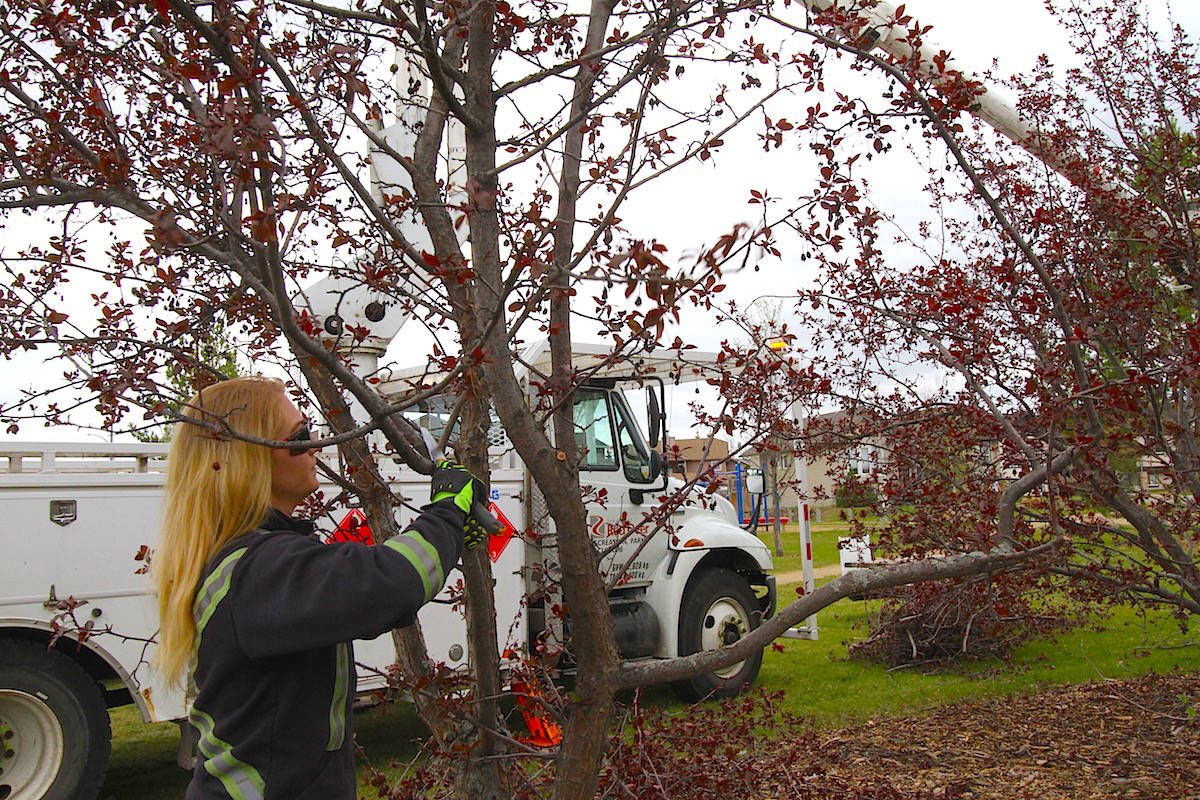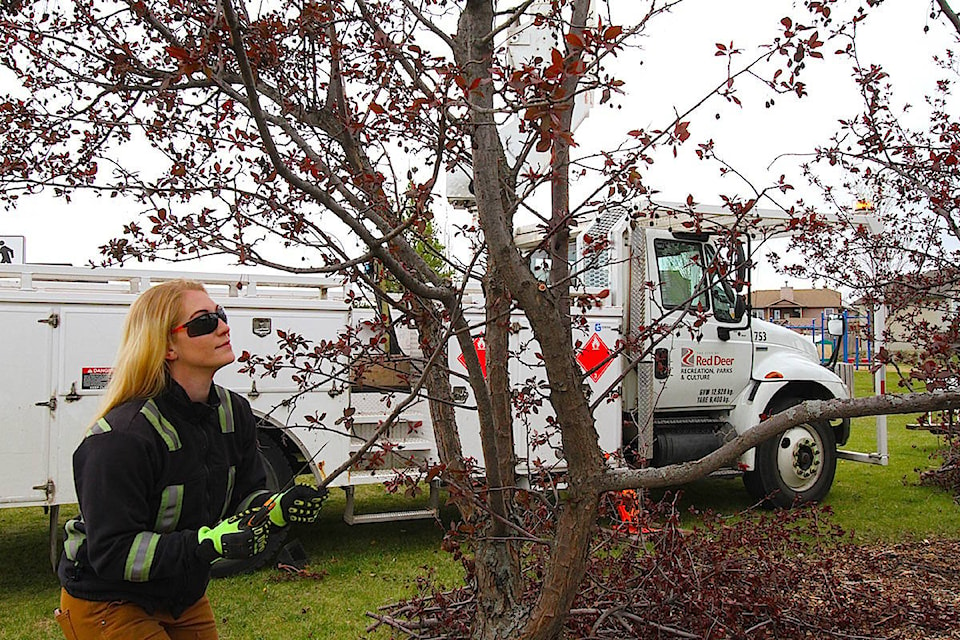Pushed over by windstorms, dehydrated by drought, infested by pests — the past few years have taken a toll on Red Deer-area trees.
This spring, City of Red Deer parks workers are making their usual pruning and trimming rounds, keeping in mind that many trees are becoming more susceptible to insects and fungus damage, because they are run down.
When it comes to trees having good resistance to insects and diseases, “drought can really have a negative effect,” said Susan Katzell, urban forester for the City of Red Deer.
And this region is well into a multi-year dry spell that could very well continue into the summer.
While homeowners water their flower and vegetable gardens when there’s little rain, they don’t always think to water their trees, she said.
But Katzell suggests both shallow and deeper root trees will need a good hosing down if there continues to be a lack of rain when the soil dries out from recent snow melt.
Signs of drought stress are when trees produce smaller-than-usual leaves, are bare on the top branches and push out strange, sucker-like leafy growths from their trunks.
Katzell suggests giving both deciduous and coniferous trees a good underground watering — not just at their base, but a few metres away from the trunk, where the root systems are, when soil becomes too dry.
City parks workers are seeing an array of insect infestations, fungal and bacterial diseases this spring, and “trees can better defend themselves when they are fully hydrated,” added Katzell.
Among the pests parks workers will be on the lookout for are the yellow-headed spruce sawfly, which eat the soft new needles on trees while they are in the larval stage in mid-June and July.
These “worm-like things” are easy enough to spot and to get rid of, said Katzell: “We just squish them, rather than rely on chemicals.”
The larch sawfly can also crop up and cause some localized damage. Katzell said most of the time, caterpillar-like larvae will eat the trees leaves or needles, and then turn into a flying insect and take off.
“Ninety-nine per cent of bugs don’t really do anything to the tree” in the long term.
Non-native elm bark beetles are the exception, as they spread a fungus that is deadly to elm trees.
So far, none of these insects have been found on local trees, said Katzell.
“Alberta is one of the last places in the world not to have Dutch elm disease” — and she credits monitoring programs, as well as public awareness.
However, local choke cherry, Schubert choke cherry and Mayday trees are susceptible to another fungus, black knot. If branches containing a black clump of fungus are left unpruned, the disease can debilitate a tree and spread to other trees.
Katzell noted the pruned branches should be disposed of in the landfill and not composted.
Birch trees with no leaves at the top could be infested by the bronze birch borer. Ash trees with yellowing, stunted leaves could suffer from the ash bark beetle. Fruit trees with scorched-looking foliage could have the bacterial disease fire blight … the list goes on.
Katzell always recommends consulting with an arborist before taking action.
Meanwhile, the City of Red Deer continues to replace trees that were damaged in the 2017 windstorm, and the Clearview neighbourhood is among those that will get some new trees this summer.
lmichelin@reddeeradvocate.com
Like us on Facebook and follow us on Twitter

